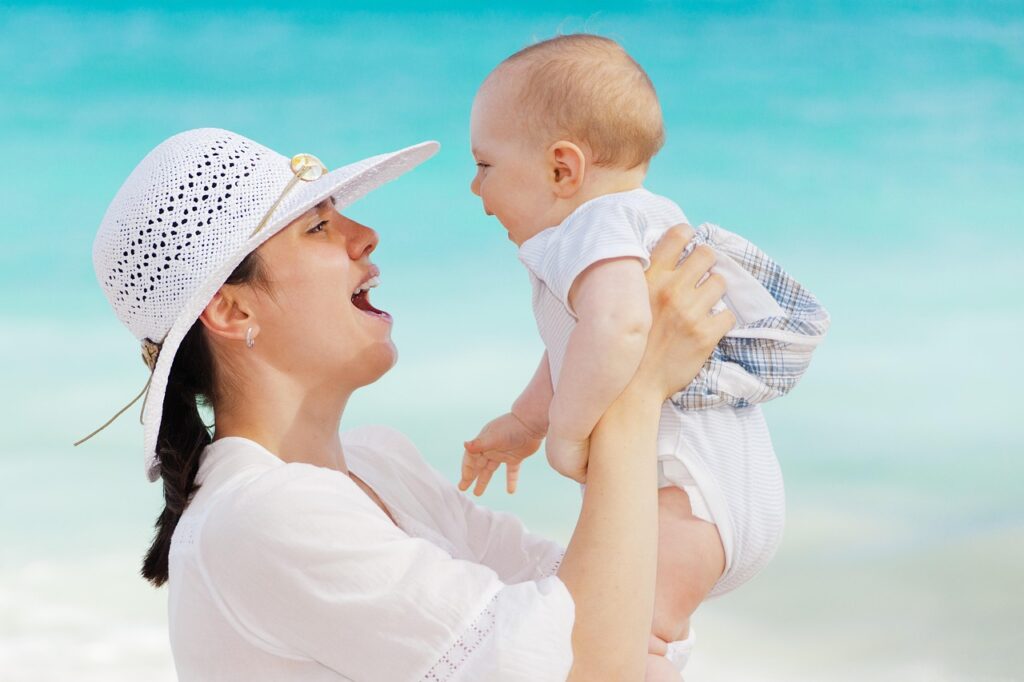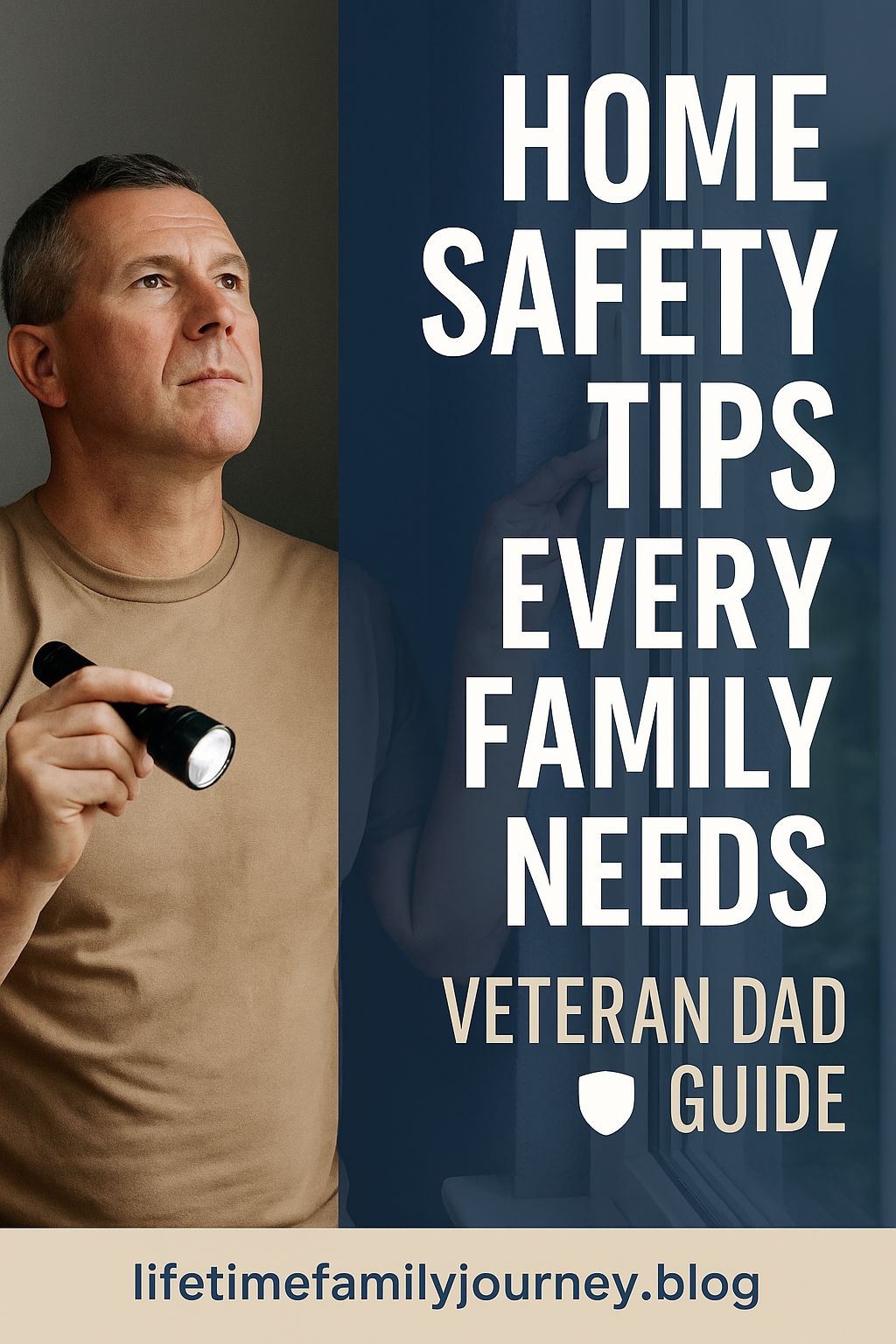7 Home Safety Tips Every Parent Needs: A Veteran Dad’s Guide
When was the last time you walked around your home and purposefully asked yourself, “Is my family truly safe?” As a father of six who’s seen his fair share of childhood mishaps, I’ve learned that effective home safety tips aren’t just about buying gadgets—it’s about creating systems that work for your unique family.

Most new parents get bombarded with advice to “childproof everything” before their little one arrives. But after raising five daughters and one son over twenty years of marriage (and my wife being a middle school math teacher), I’ve developed practical home safety tips without losing your mind in the process.
The Truth About Newborn Safety: Don’t Panic Yet
New parents, take a deep breath. Your newborn doesn’t need every safety gadget on day one. Your tiny human isn’t mobile yet 👶, so you have time to implement home safety tips gradually.
During those precious first months, the most critical safety measure is surprisingly simple: always place babies on their backs to sleep. The American Academy of Pediatrics has consistently recommended this position to reduce the risk of Sudden Infant Death Syndrome (SIDS).
Tummy time is essential for development but should always be supervised. My wife and I used to take turns watching our babies during tummy time, making it a bonding activity rather than just a developmental checkbox.
💡 Pro Tip: Start with 3-5 minutes of tummy time daily, gradually increasing as your baby grows stronger. This helps develop neck muscles and prevents flat spots on the head.
During my Air Force service, I learned that preparation without panic is key. The same applies to newborn safety—be prepared, but don’t let anxiety rob you of enjoying those fleeting early moments.
Toddler-Proofing: The Adventure Begins

When your little one starts showing signs of mobility, it’s time to get serious about toddler proofing. Here’s my battle-tested approach to childproofing cabinets and more after raising six curious explorers:
1. Clear the Territory 🧹
First, thoroughly clean and organize the areas where your toddler will be spending time. I’m not saying you have a messy house—it’s probably cleaner than mine with six kids! But let me tell you, if you want something to be found, let a toddler roam around. It will be discovered and promptly placed in their mouth, nose, or ear.
I still remember the emergency room visit with my firstborn daughter who decided a bead belonged in her nose. The doctor’s solution? He had me hold one nostril and blow through her mouth—out popped the bead! I’m still not sure who was more traumatized by that experience.
If you have pets that shed, be extra vigilant about fur piles that can be irresistible to curious toddlers.
2. Elevation is Your Friend 📚
Second, remove all decorative items from low tables and shelves. Those lovely glass ornaments and family heirlooms? Time for them to take a vacation to higher ground.
In our home, we created “kid zones” and “adult zones” to maintain some semblance of decorative normality while keeping fragile items safe. This approach to home safety tips has saved countless precious items from destruction.
3. Embrace the Inevitable Booboo 🩹
While you can attempt to cushion every corner and table edge with protective padding, here’s the honest truth from a veteran dad: regardless of the tremendous effort we put into creating a safety bubble, kids will still find ways to get booboos.
This doesn’t mean we don’t try—we absolutely should take precautions—but we should also accept that minor bumps are part of childhood development and learning. Toddler proofing can only go so far.
4. Outlet Protection is Non-Negotiable ⚡
Get outlet covers immediately. These prevent not only electrocution but also damage to outlets themselves, which is a crucial part of any home safety tips list.
I speak from experience here. My then 5-year-old son once thought it brilliantly clever to shove pieces of crayon into the grounding port of an upstairs receptacle. I had to shut off power to the entire house and physically remove the outlet to extract the colorful debris. Not how I planned to spend my Saturday!
According to the Electrical Safety Foundation International, electrical outlets are responsible for approximately 2,400 children’s injuries annually, with many requiring emergency room visits.
5. Cabinet Security Systems 🔒
As curious toddlers expand their territory beyond your initial cordoned-off area, you’ll need effective childproofing cabinets containing anything you don’t want explored (which is most of them).
After experimenting with various toddler proofing systems across six kids, here are the most effective cabinet security measures we’ve used:
Strap Latches: These work well for standard cabinets and are relatively straightforward to install.

Magnetic Locks: These are my personal favorite as they’re nearly invisible from the outside. They install on the inside of cabinet doors or drawers and come with 2 magnets and a small holder. The beauty is that you can place the magnet on any corner in your house if it has metal trim beneath.

💡 Dad Hack: All these childproofing cabinet locks and latches come off easily with slight heat from a hair dryer when you’re ready to remove them.
The Consumer Product Safety Commission recommends securing all cabinets containing potentially dangerous items such as chemicals, medications, and sharp objects to prevent childhood poisonings and injuries.
6. Door Safety: Multi-Layer Defense 🚪
Door security became critically important in our house when my high-functioning autistic son once wandered out to the neighbors’ house unannounced. Our front door now has a comprehensive security system (from top to bottom):
- Digital lock and deadbolt
- Slide lock (the same type we use for our basement door)
- Plastic handle cover that prevents little hands from gripping the knob
- Emergency latch at the top that connects to a pin outside

You likely won’t need this level of door security, but having at least a handle cover on exterior doors gives peace of mind. We also installed them on our basement door, laundry room door leading to the garage, and the garage door itself. These simple home safety tips can prevent dangerous wandering.
7. Window Wisdom 🪟
Make sure all windows in your home have functioning locks. Not all of my children have tested this boundary, but at least one (my adventurous son) definitely has. This isn’t just about keeping kids in—it’s also about overall home security.
His curiosity is partly why we invested in a front door camera system, which serves multiple safety functions. When it comes to home safety tips, never underestimate the importance of secure windows.
Beyond Baby-Proofing: Family Safety as Kids Grow
What happens when your children outgrow the baby-proofing stage? Safety evolves but remains just as important. Here’s my approach to three critical areas:
Medication Management 💊
All medications—prescription and over-the-counter—are locked in a safe in our home. None of our children, including those with prescribed ADHD medications, can access them without either my wife or me present.
Is this overly cautious? Perhaps. But with eight people in a home with five bathrooms, I simply cannot keep track of that many medicine cabinets. For our family, centralized medication management eliminates unnecessary risk and is a cornerstone of our family safety plan.
Weapon Safety 🔒
I’ll be direct here: Yes, we have weapons in our home. Both my wife and I are licensed to concealed carry. However, our rules are non-negotiable:
- No loaded firearms inside the home
- All weapons are secured in a safe
- Safety education is ongoing with age-appropriate lessons
This approach balances our Second Amendment rights with our primary responsibility as parents to keep our children safe. Just like childproofing cabinets, securing weapons properly is essential.

Household Chemical Control 🧪
We limit household chemicals to absolute necessities and avoid highly toxic substances like bleach when safer alternatives exist. All outdoor chemicals are locked securely in the garage, away from curious hands. This is one of those home safety tips that seems obvious but is often overlooked.
Fire Safety: The Often Overlooked Protector
Fire safety for homes became a priority for me out of a general concern and after realizing that many houses—especially older ones—don’t meet current safety codes. Creating a family safety plan for fires is essential. Here’s what every family should know:
Smoke Alarm Requirements 🔥
While regulations vary by state, here in Virginia:
- All newly constructed homes require hardwired smoke alarms with battery backup
- Alarms must be interconnected (when one sounds, they all sound)
- As of July 1, 2022, replacement alarms must comply with UL217 standards and be no more than 10 years from manufacture date
- Battery-powered devices must use 10-year sealed batteries
Proper placement is crucial:
- One on each floor level
- Inside each bedroom
- Outside each sleeping area
- CO2 alarms on each floor (absolutely essential if you have gas/propane appliances)
Know your alarm types:
- Ionization alarms: Better at detecting fast-flaming fires
- Photoelectric alarms: Better at detecting slow or smoldering fires
The National Fire Protection Association recommends having both types, so either mix them throughout your home or invest in dual-sensor alarms. Effective fire safety for homes starts with proper detection.
⚠️ Important Reminder: Replace batteries immediately when you hear that annoying beep every 30-60 seconds. If the alarm has a 10-year battery and continues beeping after battery replacement, check the manufacture date—alarms over 10 years old need complete replacement.
Escape Routes 🪜
For multi-story homes, each upper level should have a safety ladder as part of your family safety plan. These can be purchased at home improvement stores and stored discreetly in closets. We practice fire drills twice yearly so everyone knows exactly what to do when implementing fire safety for homes.

Fire Extinguishers: Your First Line of Defense 🧯
Every home should have:
- 2-A:10-B-C rated extinguishers on every level, positioned no more than 40 feet apart
- A specialized 711a rated extinguisher for the kitchen with its unique wet agent formula
- A garage extinguisher for flammable materials typically stored there
In our home, I’ve positioned extinguishers in the basement next to the water heater, behind a bookcase on the main floor, and wall-mounted in the second-floor hallway. For extra peace of mind, I’ve also placed a can of First Alert fire stopping spray inside every closet. These home safety tips for fire prevention could save your family’s lives.
Expanding Your Family Safety Plan as Children Grow
As your children grow from toddlers to teens, your home safety tips need to evolve too. While we’ve covered childproofing cabinets and toddler proofing extensively, let’s talk about safety for older children who face different risks.
Tech Safety: The Modern Challenge 💻
Today’s children face safety challenges we never imagined as kids. Technology brings new concerns that weren’t part of traditional home safety tips:
- Internet access points should be in common areas where you can monitor activity
- Device time limits should be established and enforced consistently
- Parental controls should be implemented on all devices
- Regular conversations about online safety should be part of your family safety plan
When my oldest daughters reached the age where they wanted smartphones, we developed a technology contract that outlined expectations and consequences. This became an important extension of our family safety plan.
The Family Online Safety Institute offers excellent resources for creating an effective digital safety plan for families with children of all ages.
Outdoor Safety Boundaries 🌳
As children gain independence, establishing clear outdoor boundaries becomes essential:
- Approved play areas should be clearly defined
- Check-in times must be established when kids are playing outside
- Neighbor awareness is important—know which homes your children can visit
- Bike safety rules including helmet requirements and road crossing procedures
We use a large neighborhood map with highlighted “approved zones” that expand as each child demonstrates responsibility. This visual aid has been tremendously effective in teaching independence while maintaining safety.
Teaching Emergency Responses 🚑
One of the most valuable home safety tips I can share is to teach children how to respond in emergencies:
- Practice calling 911 with role-playing (without actually dialing)
- Create emergency contact cards for each child
- Establish meeting points outside your home for fire evacuations
- Teach basic first aid appropriate to each child’s age
My military training emphasized that emergency response must become muscle memory. We regularly practice scenarios so my children know exactly what to do without panicking. This preparation provides peace of mind for everyone in the family.
The American Red Cross offers age-appropriate emergency preparedness resources for families that can help you teach children how to respond effectively in crisis situations.
Seasonal Safety Considerations
Your family safety plan should adapt to seasonal changes and risks. Here are some additional home safety tips organized by season:
Summer Safety 🌞
- Water safety rules for pools, lakes, and even bathtubs
- Sun protection protocols including sunscreen application schedules
- Heat safety including hydration requirements during outdoor play
- Insect protection measures for prevention of bites and stings
During summer, our family safety plan includes a buddy system for swimming and mandatory rest periods during peak heat hours. These simple rules have prevented countless potential emergencies.
Winter Safety ❄️
- Space heater placement away from flammable materials
- Carbon monoxide detector maintenance with seasonal battery changes
- Ice management to prevent slips and falls on walkways
- Fireplace safety practices including proper ash disposal
Fire safety for homes is especially important in winter when heating systems work overtime. We conduct additional fire drills during the first cold snap to reinforce escape routes.
Severe Weather Preparedness 🌪️
Living in Virginia, we face everything from hurricanes to snowstorms. Our family safety plan includes:
- Emergency supply kits with 72 hours of essentials
- Battery-powered weather radio for updates during power outages
- Designated shelter areas within the home for different emergency types
- Evacuation routes and family meeting locations
After experiencing a three-day power outage with six children during a winter storm, I can attest that preparation makes all the difference. Our kids actually viewed it as an adventure rather than a crisis!
For detailed guidance on preparing for various types of emergencies, the Federal Emergency Management Agency provides comprehensive resources for families to create effective emergency plans.
Special Considerations for Different Home Types
Home safety tips vary depending on your dwelling type. Here are some considerations based on where you live:
Apartment Safety 🏢
- Balcony safety measures including furniture placement
- Emergency exit planning with specific routes for upper floors
- Building-wide fire alarm response protocols
- Neighbor awareness for community safety support
Rural Home Safety 🏡
- Extended power outage preparation
- Wildlife encounter protocols
- Distance from emergency services considerations
- Water source security for well-dependent homes
Our previous home was in a rural area with spotty cell service, which required additional planning for emergencies. We installed a landline phone that would work during power outages specifically for emergency calls.
Creating Your Own Family Safety Manual
One of the best home safety tips I’ve implemented is creating a comprehensive family safety manual. This might sound excessive, but it’s become an invaluable resource, especially when we have babysitters or when family members visit.
Our manual includes:
- Emergency contact information for family, neighbors, and medical providers
- Home safety diagrams showing utility shutoffs, fire extinguisher locations, and escape routes
- Medical information including allergies and medications for each family member
- House rules for safety and behavior expectations
We keep this in a clearly marked binder in our kitchen command center. It’s updated annually and reviewed with everyone who cares for our children.
Building Safety Culture in Your Home
The most effective home safety tips aren’t just about gadgets and locks—it’s about creating a culture where everyone participates in maintaining a safe environment. As my children have grown, they’ve gradually taken on more responsibility for household safety.
My military background taught me that the best family safety plan is consistent, clear, and constantly evolving. What worked for toddler proofing won’t work for teenagers, and what protects a newborn won’t address the needs of an adventurous seven-year-old.
The goal isn’t to create a risk-free environment—that’s impossible. Instead, we aim to manage risks intelligently while allowing our children the freedom to learn and grow. Sometimes that means letting them experience minor consequences in controlled environments so they develop good judgment about home safety.

Conclusion: Safety as a Family Value
The most effective home safety tips aren’t just rules to follow—they’re values to instill. When safety becomes part of your family culture, children internalize these principles and carry them forward.
After twenty years of marriage, raising five daughters and one son, and facing countless safety challenges, I’ve learned that the most important aspect of home safety isn’t the gadgets—it’s the consistent communication and example we set as parents.
Whether you’re implementing toddler proofing strategies, childproofing cabinets, or developing fire safety for homes, remember that your attitude toward safety speaks volumes. When children see us taking these precautions seriously (without becoming paranoid), they learn to value protection without living in fear.
I hope these home safety tips from a veteran dad help you create a secure environment for your family while still allowing for the adventures and occasional scraped knees that are part of a joyful childhood.
What home safety tips or toddler proofing strategies have you implemented? Have I missed anything about childproofing cabinets or fire safety for homes? I’d love to hear about your family safety plan in the comments!
More from the Blog:
🏠 25 Genius Home Cleaning Tips for Large Families
Family Routines That Work – 7 Simple Fixes for a Calmer Day
💬 Want More Real Talk? Visit My Other Blogs
✝️ Mountains Will Move
Looking for faith-based encouragement for families? Over at Mountains Will Move, we talk about how prayer shapes family decisions, finding hope when life feels heavy, and staying grounded in Jesus-centered family living through all seasons.
🕵️ Everyday Exposed
Want real talk about emotional support animals or the truth behind popular pet myths? On Everyday Exposed, we’re debunking social media misinformation, taking on tough topics, and challenging cultural narratives with honesty and research.

